
The Municipal Art Society of New York (MAS) is a non-profit membership organization for preservation in New York City, which aims to encourage thoughtful planning and urban design and inclusive neighborhoods across the city.

A nonprofit organization (NPO) or non-profit organization, also known as a non-business entity, or nonprofit institution, and often referred to simply as a non-profit, is a legal entity organized and operated for a collective, public or social benefit, as opposed to an entity that operates as a business aiming to generate a profit for its owners. A nonprofit is subject to the non-distribution constraint: any revenues that exceed expenses must be committed to the organization's purpose, not taken by private parties. An array of organizations are nonprofit, including some political organizations, schools, business associations, churches, social clubs, and consumer cooperatives. Nonprofit entities may seek approval from governments to be tax-exempt, and some may also qualify to receive tax-deductible contributions, but an entity may incorporate as a nonprofit entity without having tax-exempt status.

Crow Wing County is a county in the East Central part of the U.S. state of Minnesota. As of the 2020 census, the population was 66,123. Its county seat is Brainerd. The county was formed in 1857, and was organized in 1870.
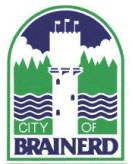
Brainerd is a city and the county seat of Crow Wing County, Minnesota, United States. Its population was 14,395 at the 2020 census. Brainerd straddles the Mississippi River several miles upstream from its confluence with the Crow Wing River, having been founded as a site for a railroad crossing above the confluence. Brainerd is the principal city of the Brainerd Micropolitan Area, a micropolitan area covering Cass and Crow Wing counties and with a combined population of 96,189 at the 2020 census. The city is well known for being the partial setting of the 1996 film Fargo.
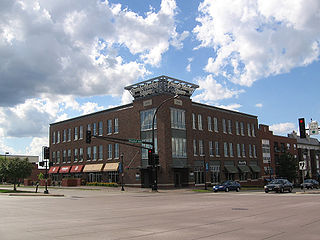
Burnsville is a city 15 miles (24 km) south of downtown Minneapolis in Dakota County, Minnesota. The city is situated on a bluff overlooking the south bank of the Minnesota River, upstream from its confluence with the Mississippi River. Burnsville and nearby suburbs form the southern portion of Minneapolis–Saint Paul, the 16th-largest metropolitan area in the United States, with about 3.7 million residents. At the 2020 census the population was 64,317.

Hallock is a city in and the county seat of Kittson County, Minnesota, United States. The population was 906 at the 2020 census.

Monticello is a city next to the Mississippi River in Wright County, Minnesota, United States. The population was 14,455 at the 2020 census.

Bloomington is a city in Hennepin County, Minnesota, United States, on the north bank of the Minnesota River, above its confluence with the Mississippi River, 10 miles (16 km) south of downtown Minneapolis. At the 2020 census, the city's population was 89,987, making it Minnesota's fourth-largest city.

Research Triangle Park (RTP) is the largest research park in the United States, occupying 7,000 acres (2,833 ha) in North Carolina and hosting more than 300 companies and 65,000 workers. It is owned and managed by the Research Triangle Foundation, a private non-profit organization.

Jefferson Lines is a regional intercity bus company operating in the United States. Their operations serve 14 states in the Midwest and West.
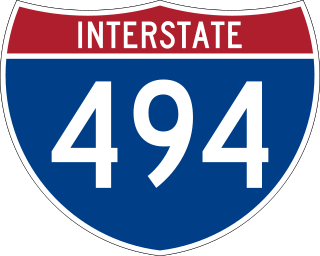
Interstate 494 (I-494) is an auxiliary Interstate Highway making up part of a beltway of I-94, circling through the southern and western portions of the Minneapolis–Saint Paul metropolitan area in Minnesota. The 42.94-mile (69.11 km) road is coupled with I-694 at each end and composes more than half of the major beltway of the region. I-694/I-494 also act as loop routes for I-35E and I-35W.

Randal O'Toole is an American public policy analyst. The majority of O'Toole's work has focused on public lands, land-use regulation, and transportation, particularly light rail. He frequently criticized proposals for passenger rail systems.

Mixed use is a type of urban development, urban design, urban planning and/or a zoning classification that blends multiple uses, such as residential, commercial, cultural, institutional, or entertainment, into one space, where those functions are to some degree physically and functionally integrated, and that provides pedestrian connections. Mixed-use development may be applied to a single building, a block or neighborhood, or in zoning policy across an entire city or other administrative unit. These projects may be completed by a private developer, (quasi-) governmental agency, or a combination thereof. A mixed-use development may be a new construction, reuse of an existing building or brownfield site, or a combination.

Paul Brainerd is an American businessman, computer programmer and philanthropist. In 1984, he co-founded the Aldus Corporation, which released Pagemaker, the first consumer-use desktop publishing software. Brainerd has since coined the term "desktop publishing". Since 1995, he has been involved in philanthropic efforts, including the founding of Social Ventures Partners in 1997, a global organization that connects local investors with non-profit community organizations.
The Minnesota Channel is an American free-to-air television channel originating at Twin Cities Public Television. It features programming related to Minnesota, plus coverage of the Minnesota Legislature when in session. The Minnesota Channel is carried as a digital subchannel on all six member networks of the Minnesota Public Television Association.
OpenPlans is a non-profit that advocates for making the streets of New York City livable for all residents. Open Plans uses tactical urbanism, grassroots advocacy, policy and targeted journalism to promote structural reforms within city government that support livable streets, neighborhoods and the city-at-large. The organization was founded in 1999 by Mark Gorton, the creator of LimeWire.
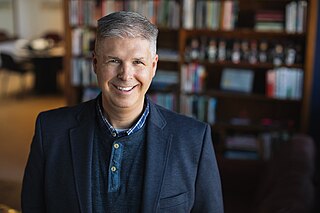
Charles Marohn is an American author, land-use planner, municipal engineer, and the founder and president of Strong Towns, an organization which advocates for the development of dense towns and the restructuring of suburbia.
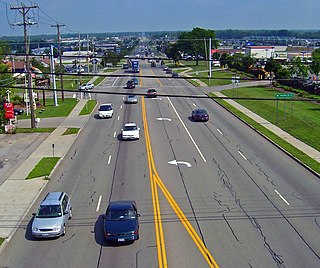
A stroad is a type of thoroughfare that is a mix between a street and a road. Common in the United States and Canada, stroads are wide arterials that often provide access to strip malls, drive-throughs, and other automobile-oriented businesses. Urban planners have criticized stroads for their safety issues and poor efficiency. While streets provide access to shops and residences at safe traffic speeds, and roads can efficiently move traffic at high speed and volume, stroads pose dangers to drivers and pedestrians and are also prone to congestion.

Andre Peter Dickens is an American politician and nonprofit executive who is the 61st and current mayor of Atlanta, Georgia. He was a member of the Atlanta City Council and defeated council president Felicia Moore in the second round of Atlanta's 2021 mayoral election. He is the chief development officer at TechBridge, a nonprofit technology organization. He served as the chairperson of the transportation committee and chaired on the Public Safety and Legal Administration Committee.

















